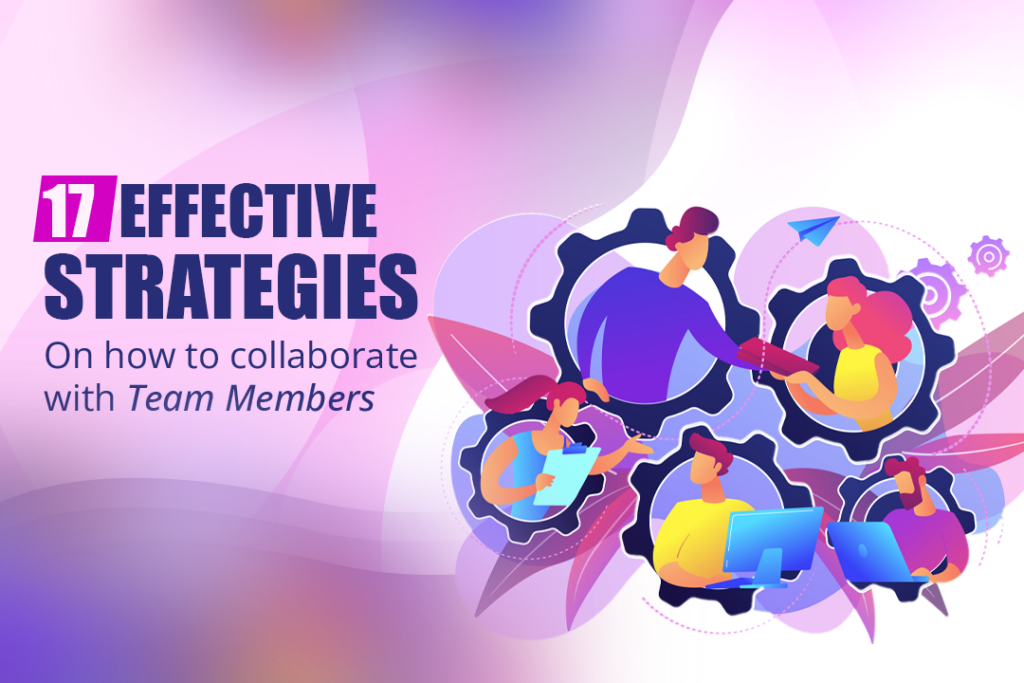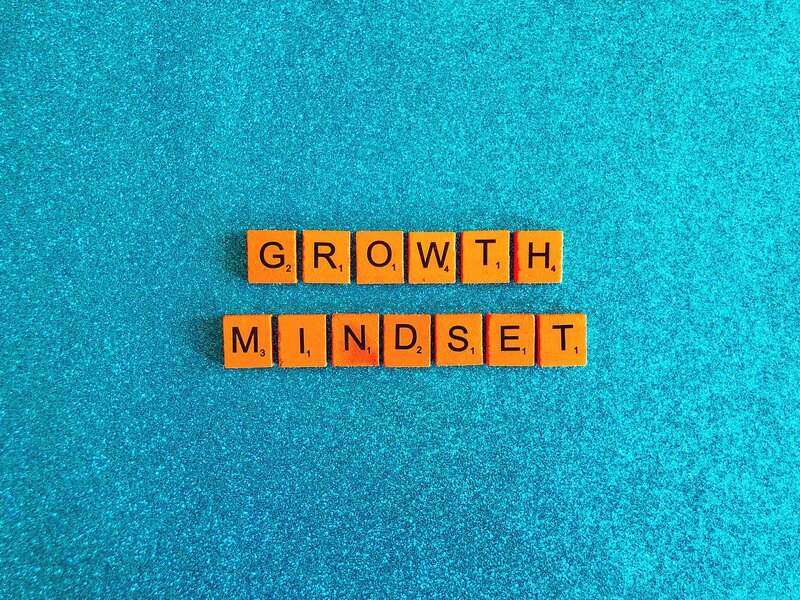
In today’s fast-paced and interconnected world, knowing how to collaborate with team members has become essential for success in any professional setting. A productive team environment fosters creativity, innovation, and efficiency, enabling members to pool their skills and expertise toward a common goal.
According to a research paper published in a journal titled, Management and Administrative Sciences, when individuals come together, the team’s collective power is unleashed and they perform more efficiently. If you seek ways to enhance teamwork and maximize your team’s potential, you’re in the right place. In this article, we will explore 15 effective strategies to collaborate with team members, providing practical insights and actionable steps to incorporate a productive team environment.
17 Strategies On How To Collaborate With Team Members
Here are 17 strategies explaining how to collaborate with team members and maximize team productivity-
1. Set Clear Goals and Expectations
Setting clear goals and expectations provides a roadmap for the team. It ensures everyone is aligned and working towards a common purpose, helping create a sense of direction, clarity, and focus, which is essential for maximizing productivity.
For instance, if the goal is to launch a new product, each team member can contribute their expertise to different aspects such as design, marketing, and production, working together to ensure a successful launch.
How to implement this strategy:
- Communicate the company’s mission to the team to maximize the group effort.
- Break down the company goals into smaller, manageable tasks and assign them to team members accordingly.
- Define key performance indicators (KPIs) that your team will use to measure the project’s success.
- Internally communicate updates and progress toward the goals to keep everyone informed.
- Encourage team members to ask questions and seek clarification if unsure about any aspect of the plans or expectations.
Implementing this strategy can create a shared understanding among team members. This fosters a collaborative setting and enables them to learn how to collaborate with other team members to achieve the desired outcomes.

2. Encourage Open and Transparent Communication
This means promoting a culture of open dialogue, active listening, and honest information exchange. This strategy is crucial for building trust and an efficient employee experience.
For example, during team meetings, team members can freely share their ideas and opinions, leading to robust discussions and ultimately impacting the company’s growth.
How to implement this strategy:
- Create channels for open communication, such as brainstorming sessions, digital collaboration tools, or even having difficult conversations.
- Utilize appropriate communication tools to streamline important discussions.
- Encourage active listening by allowing everyone to speak and ensuring that all ideas and opinions are respected.
- Establish a safe and nonjudgmental environment. Individuals should feel comfortable practicing collaboration with team members. They should express their thoughts and concerns without fear of repercussions.
- Provide workshops on practical communication skills, including active listening, giving constructive feedback, and conflict resolution.
Fostering open and transparent communication can promote a culture of trust, mutual respect, and collaboration within the team. This leads to improved problem-solving, better decision-making, and increased productivity. Individuals are empowered to learn how to collaborate with team members and to contribute their ideas and insights openly.
3. Promote Collaboration and Teamwork
When collaboration and teamwork are encouraged, team members pool their strengths and expertise, complementing one another’s skills. Creating a shared workspace, where all the team members can collaborate on a project and work together to complete the task, will inculcate a sense of teamwork and will lead to workspace efficiency.
For instance, if a group project requires creative thinking and technical implementation, collaboration allows individuals to leverage each other’s strengths. The creative team members can work on creativity, while the technically skilled members can execute the ideas efficiently. This synergy creates a stronger outcome than any individual could have achieved alone.
How to implement this strategy:
- Establish a team-oriented culture that values and rewards collaboration.
- Encourage cross-functional collaboration by assigning team members with shared interests to work together.
- Provide a collaborative approach, such as team-building activities, workshops, or projects.
- Utilize collaboration tools that facilitate seamless communication and information sharing among team members.
You can harness the team’s collective intelligence and promote knowledge sharing. Individuals who know how to collaborate with team members become more invested in achieving shared objectives, leading to successful outcomes.

4. Facilitate Continuous Training and Development Opportunities
This involves investing in team members’ growth and skill enhancement on an ongoing basis. It recognizes that learning is a lifelong process and that developing new knowledge and capabilities is essential for personal and professional growth.
For instance, providing training on the latest software or tools relevant to their work can enhance their skill sets and effectiveness in completing tasks. Moreover, offering development opportunities, such as leadership training or project management workshops, can equip team members with valuable skills.
How to implement this strategy:
- Conduct regular skills assessments to identify areas where team members would benefit from additional training or development.
- Encourage participation in conferences, industry events, or professional networking opportunities that foster knowledge exchange and skill enhancement.
- Establish mentorship programs where experienced team members can share their expertise and guide others.
- Recognize and reward team members who actively pursue learning and development opportunities.
You can foster a culture of growth and improvement within the team by prioritizing continuous training and development.
5. Delegate Responsibilities and Empower Decision-Making
This strategy allows individuals to take ownership of their assigned responsibilities and make independent decisions within their scope of work.
For instance, if a project requires expertise in different areas such as marketing, finance, and operations, delegating responsibilities to team members with relevant skills enables them to make decisions and take action.
How to implement this strategy:
- Identify individual team members’ strengths and capabilities. Then, assign responsibilities based on their skills and interests.
- Communicate the scope of authority and decision-making power given to each team member to avoid confusion or micromanagement.
- Establish regular check-ins or progress updates to monitor the progress of delegated tasks and offer assistance if needed.
- Allow team members to seek input or guidance from one another when making decisions.
By delegating responsibilities and empowering decision-making, you are not only effectively distributing the workload but also fostering a sense of trust, accountability, and ownership within the team. Team members contribute their best work and take proactive actions, leading to increased productivity and efficient task completion. To learn more about how you, as an event manager, can delegate tasks effectively, read this article, “How to Delegate Tasks Effectively to Be an Efficient Event Manager”.

6. Recognize and Celebrate Achievements
It is a powerful way to inspire team dynamics and create a positive work culture. Recognizing and celebrating achievements can reinforce a sense of continued excellence and foster a productive and engaged team.
For example, imagine a sales team working tirelessly to meet its quarterly targets. Your leadership style should recognize their hard work and dedication. During the celebration, you can publicly recognize each team member’s contributions and highlight specific accomplishments, such as exceeding sales targets, securing significant deals, or consistently providing exceptional customer service. This will increase the team morale and motivate them to work harder.
How to implement this strategy:
- Establish a system or process to identify and recognize individual and team achievements regularly.
- Provide specific and personalized feedback when acknowledging accomplishments to highlight the impact and value of the achievement.
- Celebrate achievements publicly with in-person and virtual teams. Use company-wide announcements or newsletters to ensure recognition reaches a broader audience.
- Consider providing tangible rewards or incentives, such as bonuses, certificates, or additional privileges.
- Encourage individual roles and celebrate each other’s achievements through peer-to-peer recognition programs or team-based rewards.
Recognizing and celebrating achievements can create a positive and collaborative work environment where team members feel valued and appreciated.
7. Establish a Positive and Supportive Work Environment
A positive work setting or environment fosters higher job satisfaction. It emphasizes the importance of a healthy work-life balance.
For example, a software development team is working on a challenging project with tight deadlines. The team leader should prioritize establishing a supportive work environment. This would include promoting open communication, providing flexibility in work schedules, and encouraging virtual collaborations.
How to implement this strategy:
- Foster a culture of internal communication where team members feel comfortable expressing their opinions, concerns, and suggestions.
- Create a supportive atmosphere by recognizing and appreciating individual and team achievements.
- Prioritize employee well-being by offering resources for stress management, mental health support, and work-related support systems.
Establishing a positive work environment can nurture a motivated team. Team members feel valued and supported, leading to increased productivity and overall job satisfaction.

8. Promote Work-Life Balance
Promoting work-life balance entails recognizing the importance of maintaining a healthy equilibrium between work responsibilities and personal well-being. It involves creating an environment where team members can effectively manage their workloads while having time for personal pursuits, hobbies, and self-care.
Let’s consider a marketing team that consistently works long hours and faces high-pressure deadlines. As a leader, you prioritize promoting work-life balance by encouraging team members to set clear boundaries, such as adhering to reasonable work hours and taking regular breaks. You also foster a collaborative environment where vacations and time off are encouraged and respected.
How to implement this strategy:
- Lead by example and prioritize your work-life balance, demonstrating its importance to the team.
- Encourage open communication about workload and stress levels, ensuring team members feel comfortable discussing their work-life balance concerns.
- Set realistic expectations and deadlines that allow team members to manage their time effectively.
- Promote flexible work arrangements, such as remote team collaboration or flexible schedules, where feasible.
- Encourage team members to take regular breaks, vacations, and time off to recharge and rejuvenate.
You can create an environment that values your team members’ holistic well-being. This will enhance their quality of life and increase productivity and team morale.
9. Encourage Innovation and Creativity
It inspires team members to explore innovative solutions, take calculated risks, and contribute their unique ideas. Encouraging innovation and creativity unlocks your team’s full potential. This drives continuous improvement and problem-solving and ultimately enhances productivity while allowing you to achieve broader business goals.
Consider a product development team tasked with creating a new software feature. As a leader, you would encourage innovation and creativity by providing dedicated time for brainstorming sessions, allowing team members to explore unconventional approaches, and challenging the status quo. This environment would enable team members to generate fresh ideas, collaborate on diverse solutions, and develop innovative features that differentiate the product from competitors.
How to implement this strategy:
- Foster a culture that values and rewards creativity and innovation, where team members feel safe to take risks and share their ideas.
- Provide dedicated time or resources for brainstorming sessions, innovation workshops, or idea-generation sessions.
- Encourage cross-functional collaboration and diverse perspectives to stimulate creative thinking and originality.
- Establish a feedback system that encourages constructive feedback and allows for iteration and improvement of ideas.
- Provide opportunities for professional development, such as attending innovation conferences or workshops.
Encouraging innovation and creativity leads to a competitive advantage in the market as your team consistently generates fresh and innovative ideas.

10. Create a Culture of Trust and Mutual Respect
A culture of trust and mutual respect promotes psychological safety, encourages diverse perspectives, and strengthens relationships within the team, which in turn leads to successful teamwork.
Let’s imagine a project team where trust and mutual respect are deeply ingrained. Team members feel comfortable expressing their opinions without fearing judgment or retribution. They actively listen to one another, consider different viewpoints, and know how to collaborate with team members to find the best solutions.
How to implement this strategy:
- Demonstrate trust and respect in your interactions with team members.
- Encourage open and honest communication, providing opportunities for team members to share their thoughts, concerns, and ideas.
- Actively listen to team members, showing empathy and valuing their perspectives.
- Establish clear guidelines and expectations for respectful behavior and constructive feedback within the team.
- Foster a collaborative team culture where diverse opinions and contributions are valued.
When trust and respect are present, team members are more likely to take risks, share innovative ideas, and work together cohesively to achieve common objectives.
11. Foster Effective Time Management
Effective time management involves helping team members optimize their time to prioritize tasks and meet deadlines. It entails providing resources, tools, and guidance to help individuals plan and organize their work effectively.
For example, as a manager, your leadership role would require you to foster effective time management. You can encourage team members to break down their tasks, set realistic deadlines, and allocate their time efficiently. You can also promote regular check-ins or progress meetings to monitor the status of tasks and provide support or guidance.
How to implement this strategy:
- Provide team members with time management tools like task management apps, shared calendars, or project management software.
- Encourage team members to break down larger tasks into smaller, manageable subtasks with clear deadlines.
- Help team members prioritize their work by identifying urgent and important tasks.
- Set realistic deadlines and ensure they align with the overall project timeline.
- Foster a culture of accountability, where team members are responsible for managing their time effectively.
You empower team members to maintain a productive workflow by fostering effective time management. Read our latest article, “20 Best Time Management Tips for Event Planners” to learn more about time management.

12. Implement Performance Feedback and Reviews
This involves establishing a structured system for providing feedback, evaluating individual and team performance, and fostering continuous improvement.
Consider a sales team that aims to improve its performance and meet ambitious targets. As a leader, you implement performance feedback and review processes where individual performance is assessed regularly. Through one-on-one meetings, you establish measurable goals and track progress over time.
How to implement this strategy
- Establish a regular schedule for performance check-ins and reviews, such as quarterly or bi-annual meetings.
- Provide specific and constructive feedback, focusing on strengths and areas for improvement.
- Set clear and measurable company goals that align with individual and team objectives.
- Encourage two-way communication during feedback sessions, allowing team members to share their perspectives and insights.
- Support professional development by providing resources, training opportunities, or mentorship programs.
Implementing performance feedback and reviews that drive productivity and personal growth within your team can create a feedback loop. Team members become more self-aware and empowered to enhance their performance. Practicing continuous feedback helps individuals learn how to collaborate with team members productively.
13. Cultivate a Growth Mindset
Fostering a growth mindset involves promoting the belief that abilities and intelligence can be developed through dedication, effort, and continuous learning. It encourages team members to embrace challenges, persist in the face of setbacks, and view failures as opportunities for growth.
Imagine a project team working on a complex task requiring new skills and knowledge. As a leader, you guide them in learning to collaborate with team members by emphasizing the importance of learning and improvement. Additionally, you promote a culture where mistakes are seen as learning opportunities and encourage reflection and experimentation.
How to implement this strategy:
- Provide opportunities for professional development, such as training programs, workshops, or mentorship, to promote a learning culture.
- Encourage team members to set challenging, attainable goals that push them out of their comfort zones.
- Recognize and celebrate effort, progress, and resilience in addition to outcomes.
- Encourage reflection and constructive feedback, focusing on lessons learned and areas for improvement.
You can create a team that is motivated to embrace challenges, learn from failures, and continuously improve.

14. Emphasize Workload Balance and Prioritization
It aims to reduce stress and ensure that important tasks receive appropriate attention and resources. By emphasizing workload balance and prioritization, you can optimize productivity, promote well-being, and enhance your team’s overall efficiency.
Let’s consider a software development team working on multiple projects simultaneously. You encourage team members to communicate openly about their workload and provide support or adjustments as needed.
How to implement this strategy:
- Encourage open communication among team members regarding workload, deadlines, and potential challenges.
- Conduct regular meetings to assess project status, identify priorities, and make necessary adjustments.
- Support team members in setting realistic deadlines and managing their time effectively.
- Promote a collaborative culture and resource sharing to ensure a balanced workload distribution.
- Provide additional resources or assistance for high-priority tasks or projects.
This strategy promotes a healthy work-life balance, reduces stress levels, and contributes to a positive and sustainable work culture.
15. Promote Wellness and Employee Well-being
It encompasses initiatives and policies that support work-life balance, stress management, and a positive work environment. Promoting wellness helps an individual reduce stress levels, improve mental clarity, and increase motivation. This ultimately leads to them learning how to collaborate with team members and maximize outputs. Moreover, a positive work environment that prioritizes well-being fosters stronger employee engagement, teamwork, and creativity, resulting in higher productivity and better outcomes.
As a leader, you encourage regular breaks, establish flexible work arrangements, and provide access to wellness resources such as meditation sessions and mental health support. You also foster a culture that values work-life balance.
How to implement this strategy:
- Establish wellness programs or initiatives, such as mindfulness workshops, yoga classes, or employee assistance programs.
- Encourage regular breaks and provide designated spaces for relaxation or stress relief.
- Promote work-life balance by setting clear expectations, respecting personal time, and discouraging excessive overtime.
- Foster a supportive and inclusive work culture where team members feel comfortable discussing their well-being and seeking support when needed.
- Lead by example and prioritize your well-being, demonstrating the importance of self-care to the team.
You can invest in long-term productivity and the team’s success by promoting wellness and employee well-being. A healthy work environment reduces absenteeism, increases job satisfaction, and improves team performance. Therefore, promoting wellness and mental well-being is important, read this article to know more: “20 Mental Health Tips for Event Planners That Will Help Keep Stress At Bay”.

16. Encourage brainstorming activities
An organization needs to foster an environment of growth and learning to be able to retain productive employees. If you want your team members to collaborate and share their ideas then you need to hold brainstorming sessions. Brainstorming sessions can create a safe and encouraging space for everyone to share their thoughts, insights, and new ideas on a new and innovative project. Your team members can engage in constructive discussions on daring and innovative topics that will help them think of out-of-the-box solutions to challenging problems.
Brainstorming activities also create a conducive space where employees can share their ideas that they previously had but didn’t get the chance or opportunity to showcase. This will benefit your organization, as these ideas come out of their headspace, into a constructive forum, where everyone listens to an idea and gives constructive feedback and practical ways to make those ideas a reality.
How to implement this strategy:
- Create a separate brainstorming session for all employees at least once a month.
- Set an environment where everyone must listen to each other’s ideas and thoughts without any judgment.
- Motivate everyone to present their ideas, no matter how unconventional they may be. Given, that it must be relevant to the organization.
- Ask everyone to give constructive feedback and practical approaches to implement that idea.
- Ensure that everyone gets the opportunity to present their ideas and get insights about their ideas.
- Additionally, create an environment at your workplace where team members can freely exchange new ideas among themselves and present them to you.
Encouraging your team members to brainstorm ideas can make them feel heard and seen, motivating them to talk about productive and innovative solutions in the workplace with their peers.
17. Facilitate team-building activities
Team-building activities are the best way to make your team members collaborate with each other in a fun and engaging environment. There are countless options and activities that you can choose to encourage everyone to bond with each other in an exciting way. Team-building activities inculcate a sense of belonging and community among everyone, which creates a workplace environment where everyone can have fun while working.
The most basic aspect of any team-building activity is to start with an ice-breaking session. This session is designed to break any tension or strangeness among team members by making everyone known to each other. It creates an environment where everyone knows each other, their interests, and their preferences. This makes it easier for people to bond with someone with similar interests. Since a team-building activity requires different people, some of them might’ve never known each other, to work together for a common goal, icebreaking sessions help everyone get past the stranger effect and instantly engage in conversations.
How to implement this strategy:
- Book a particular time or an entire working day for fun and engaging team-building activities.
- Choose activities that promote team collaboration and require communication with a maximum number of people.
- You can try to put people who don’t know each other well in the same group to promote communication and collaboration.
- Make sure that your team members are collaborating with others to complete their activities.
- Lastly, ensure that everyone is having fun while participating in these activities/
Team-building activities allow everyone to get out of their comfort zones and meet with new people who work in the same organization but never had the opportunity to connect. This can do wonders for your team members who can find new people who are exciting and fun and might share similar interests. Ensuring that everyone knows each other and has a memory that they all can relate to, will create a fun workplace environment and foster a sense of community. To know more about the best team-building activities read this article, “67 Team-Building Activities That Will Influence Your Employees To Perform Their Best”.

Key Takeaway
Effective collaboration is essential for success in any endeavor. By implementing the 17 strategies discussed, you can create a productive team environment that empowers and teaches you how to collaborate with team members. An organization can pursue many team-building activities, which bring the element of fun and a sense of community.
Remember, collaboration is not just about working together; it’s about leveraging your team members’ diverse skills, perspectives, and talents to achieve shared goals. By incorporating these strategies, you can unlock the full potential of your team, enhance productivity, and drive remarkable outcomes. Also, for more event-related tips, news, and reviews, you can always visit us at – Eventible!




Comments are closed.